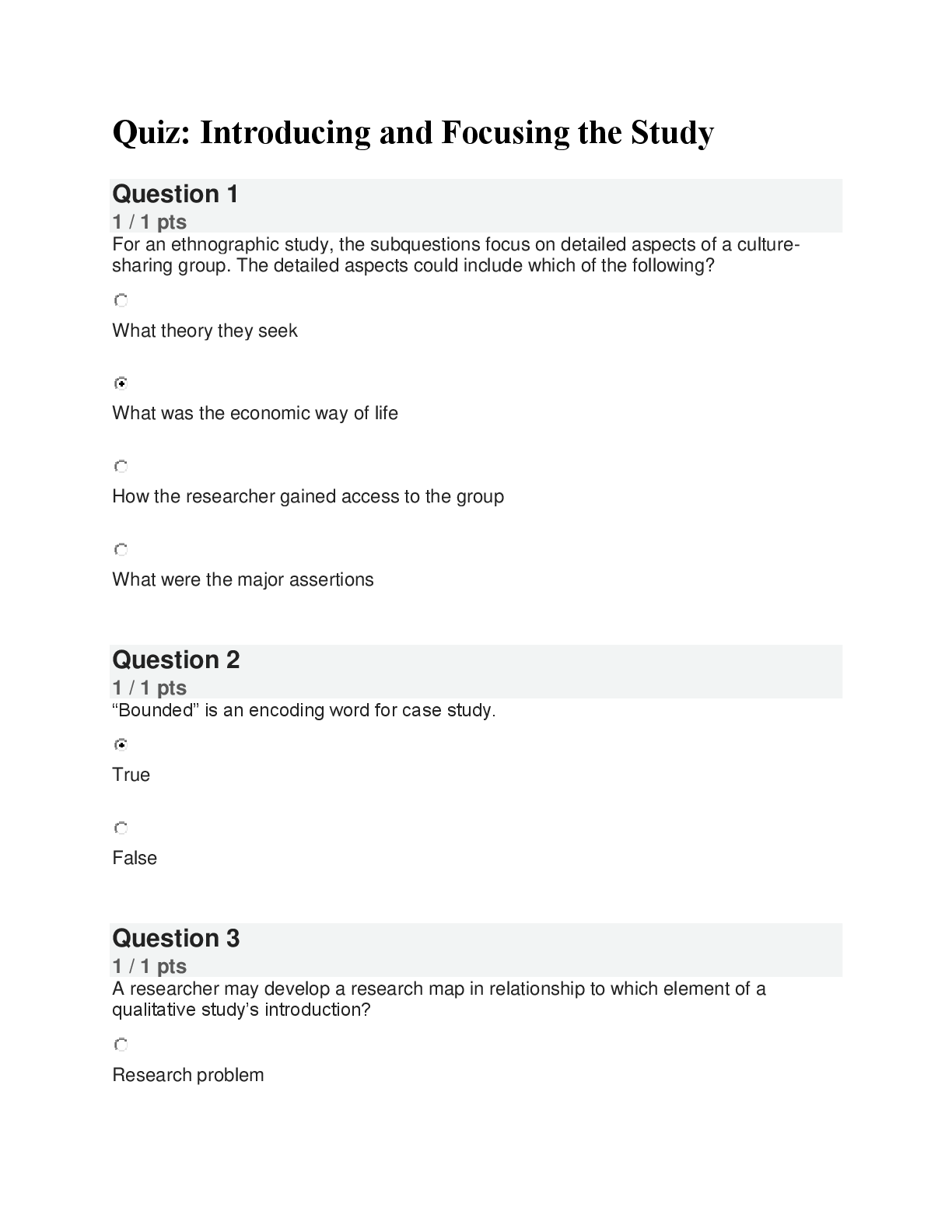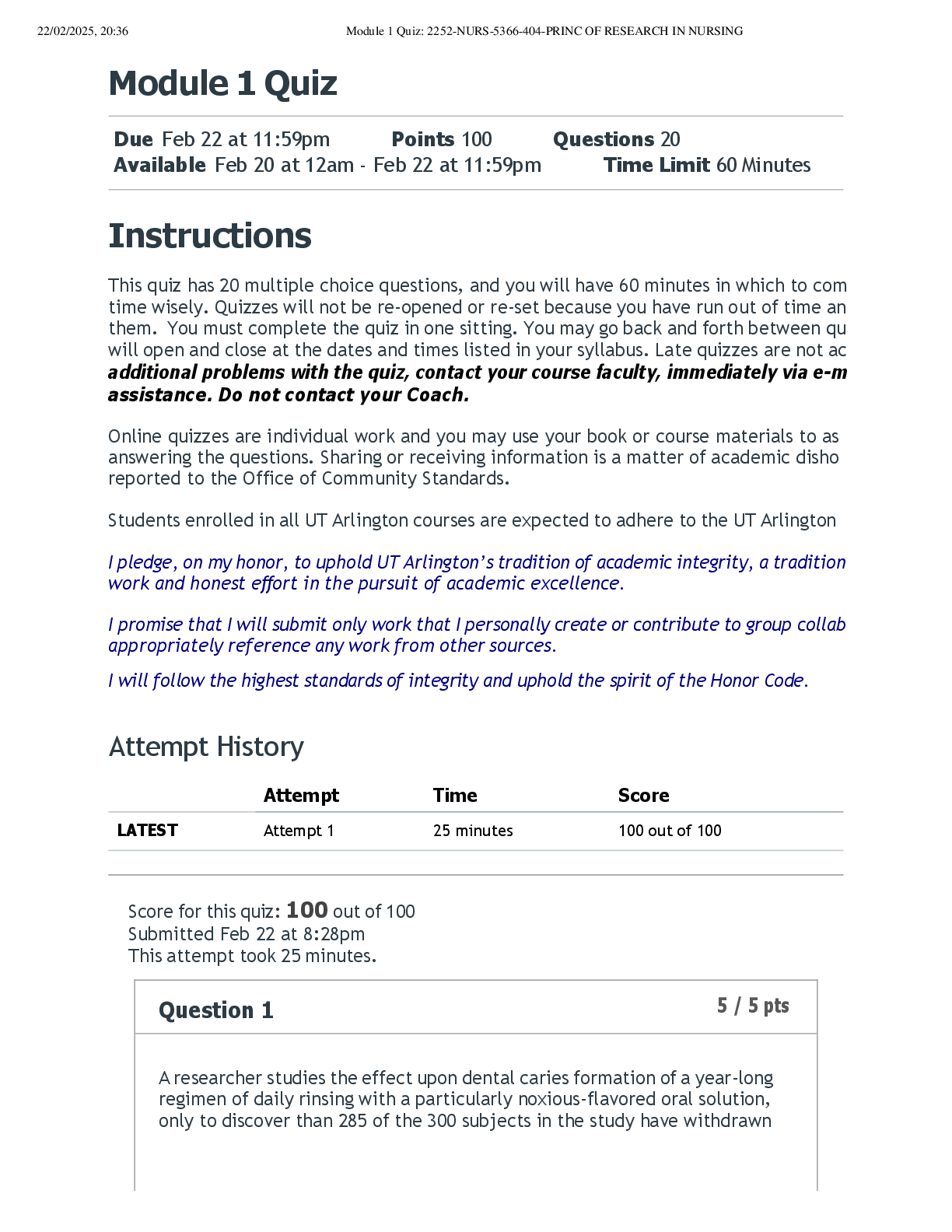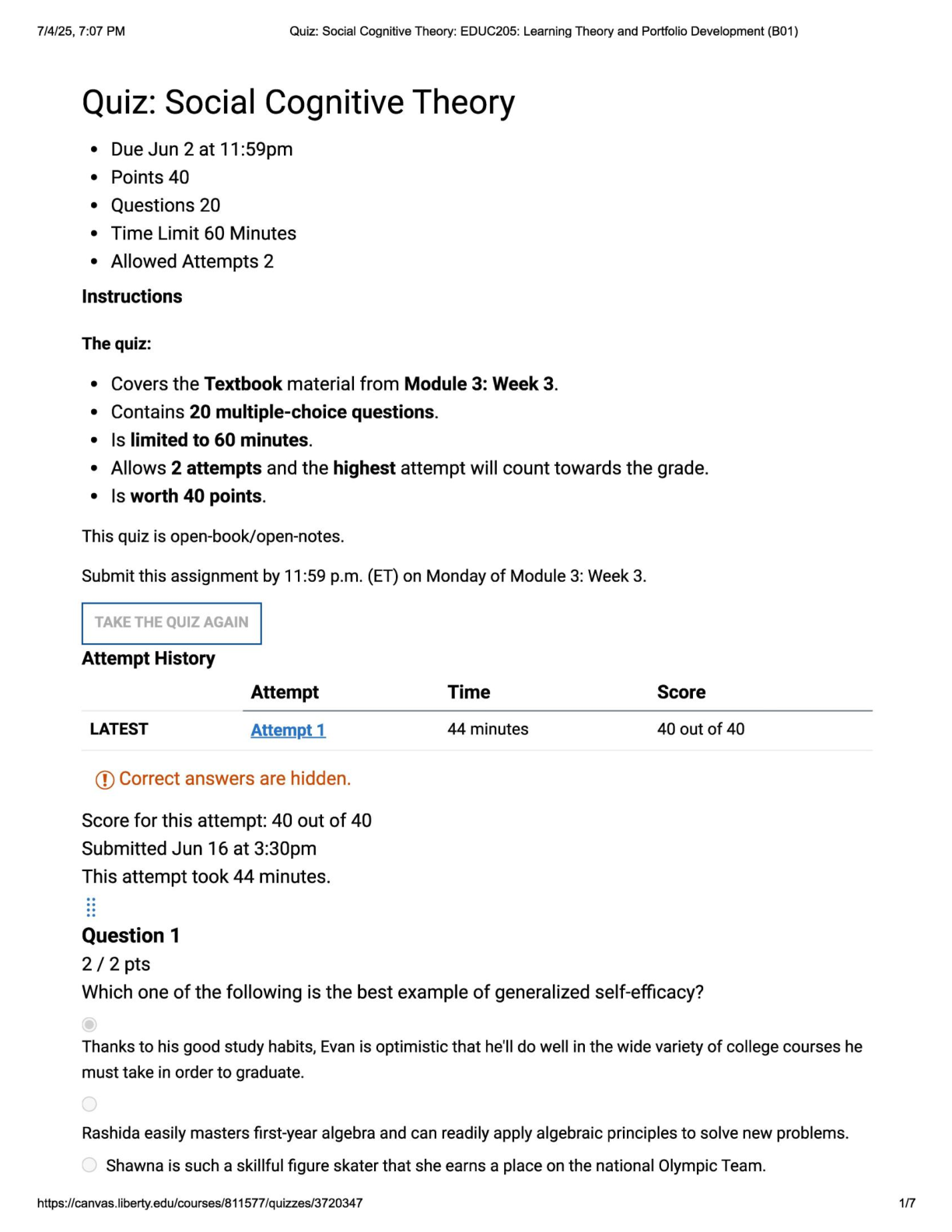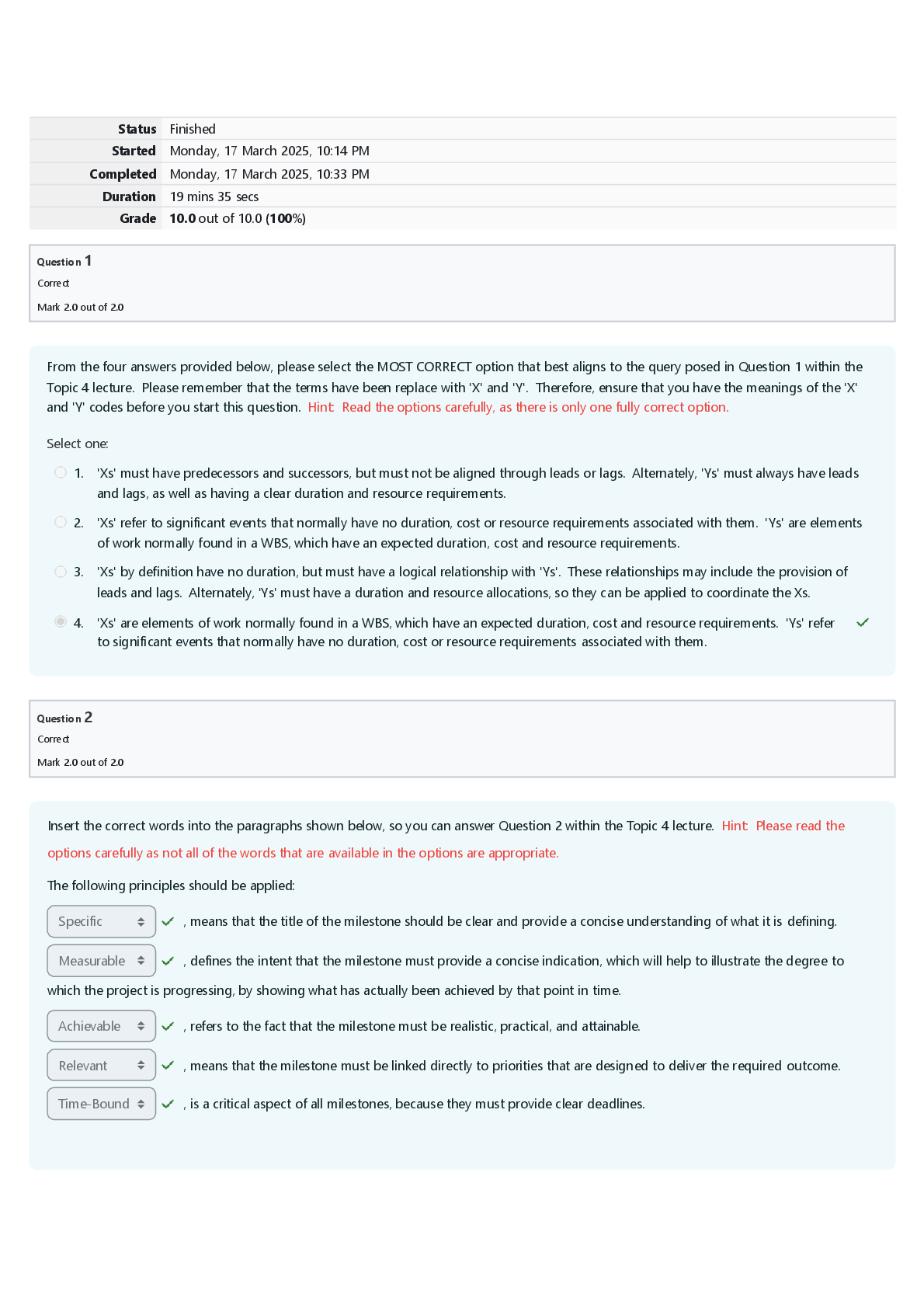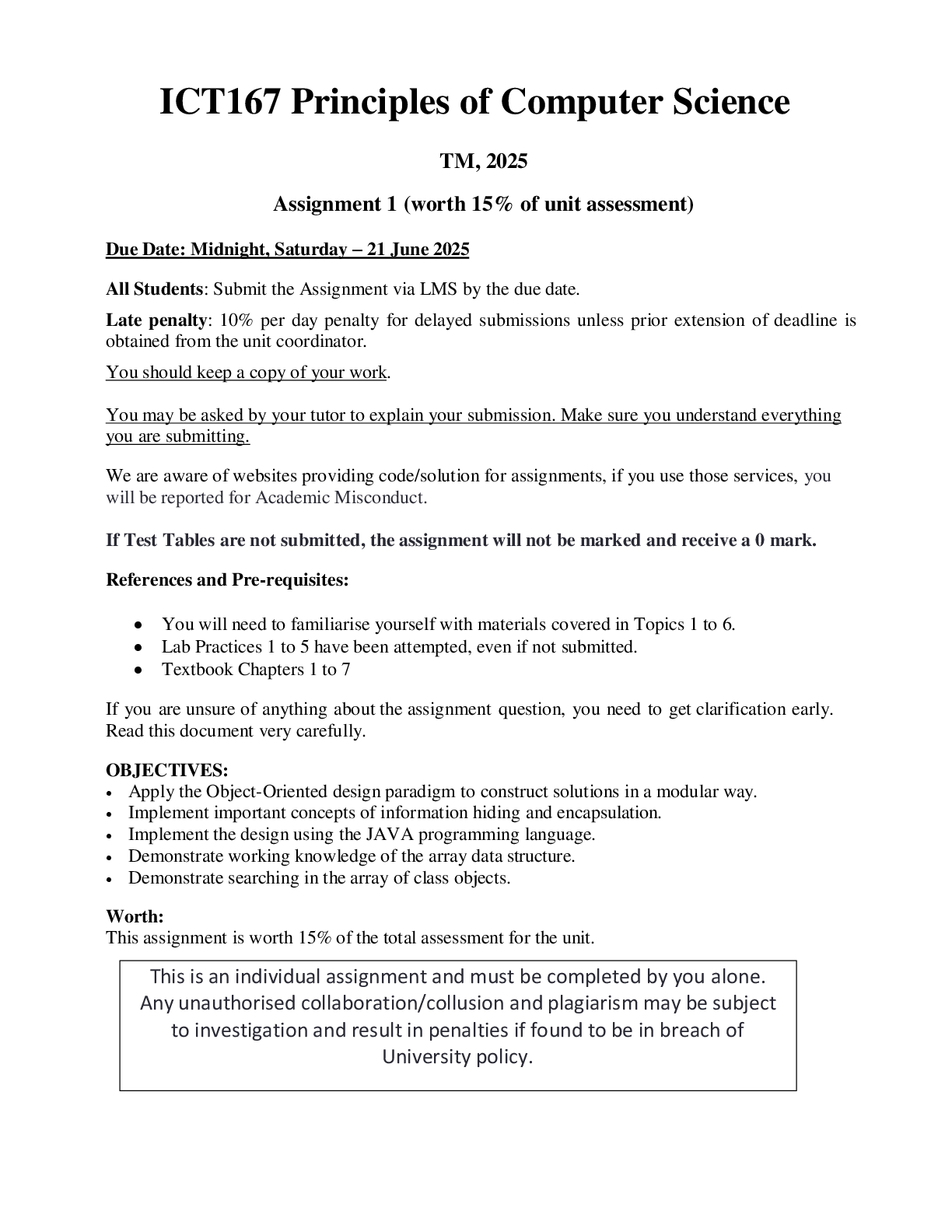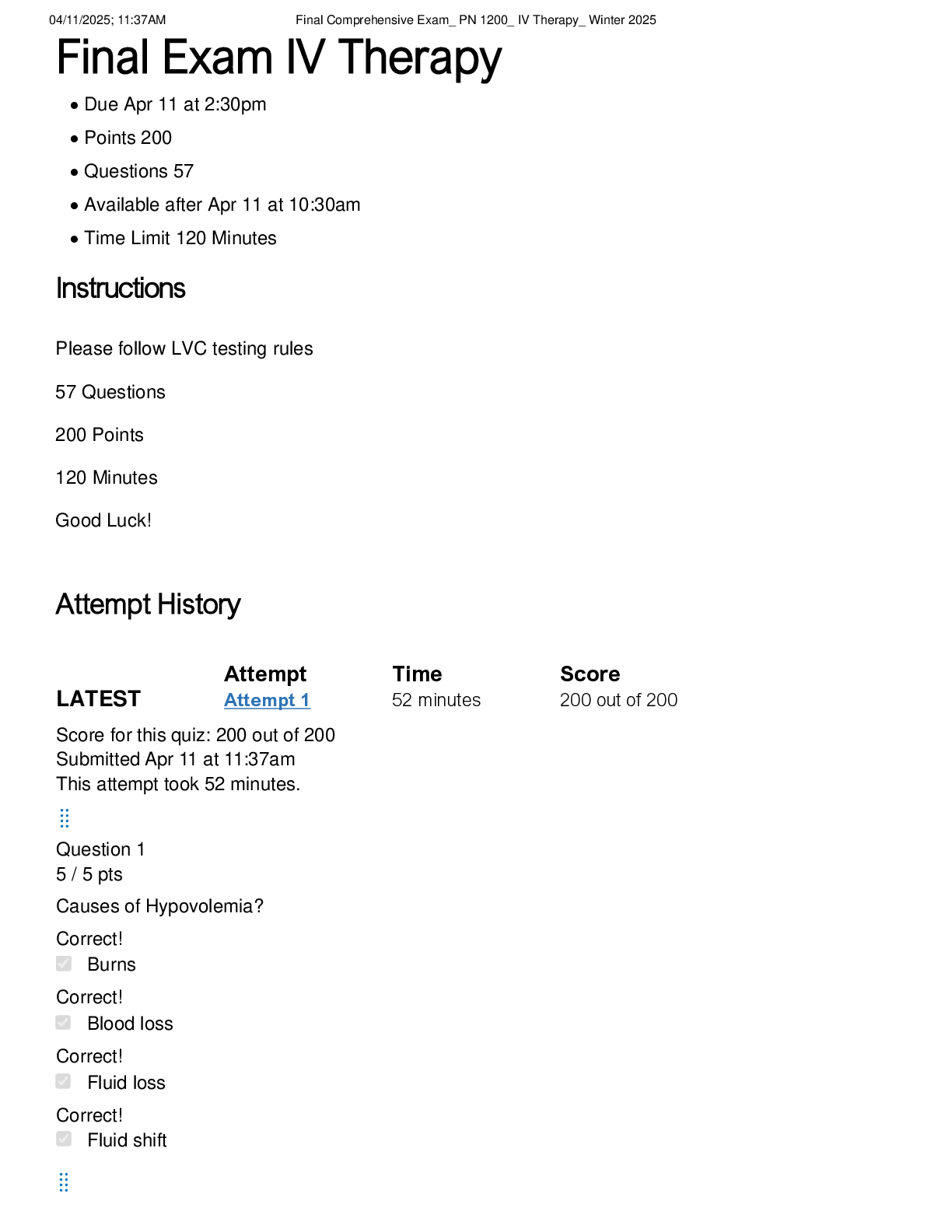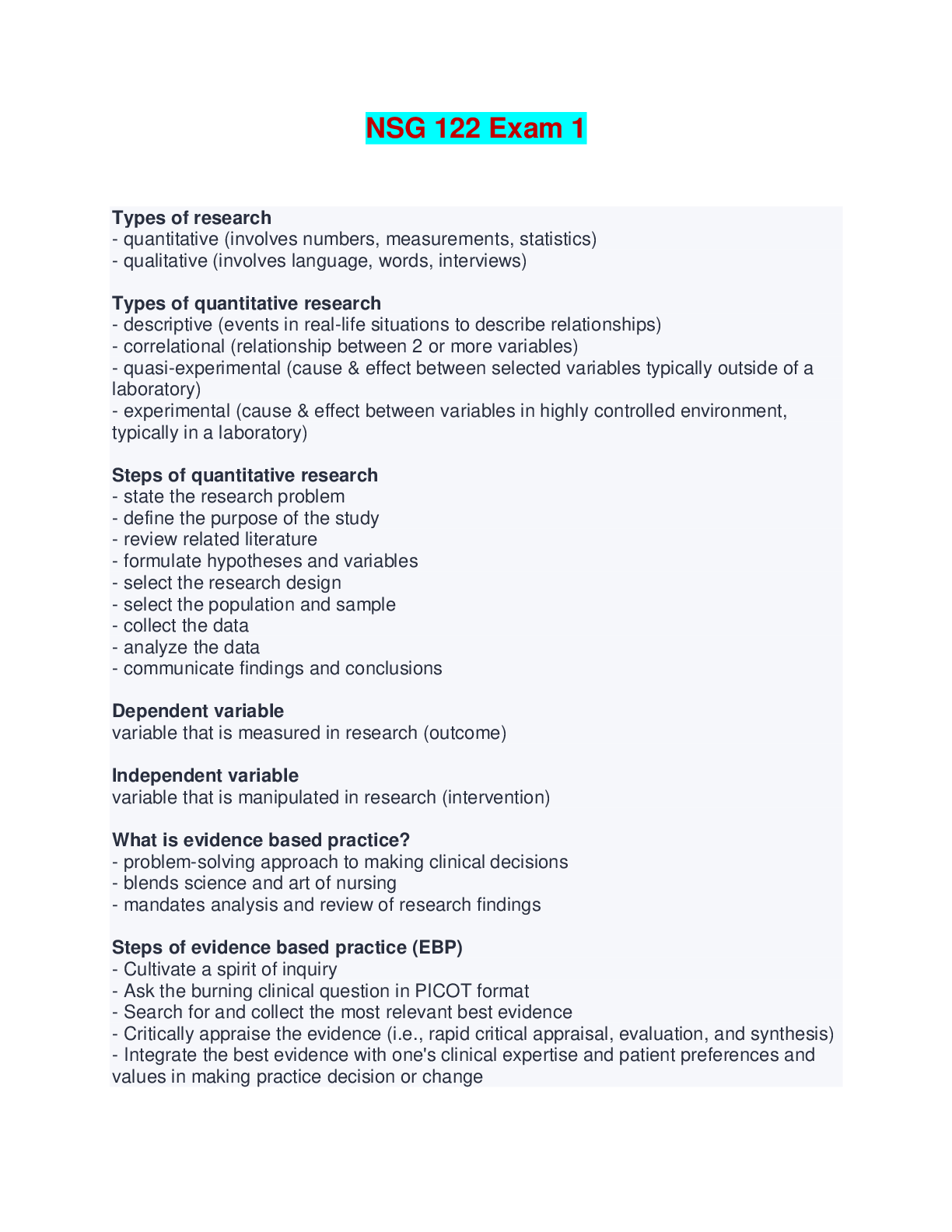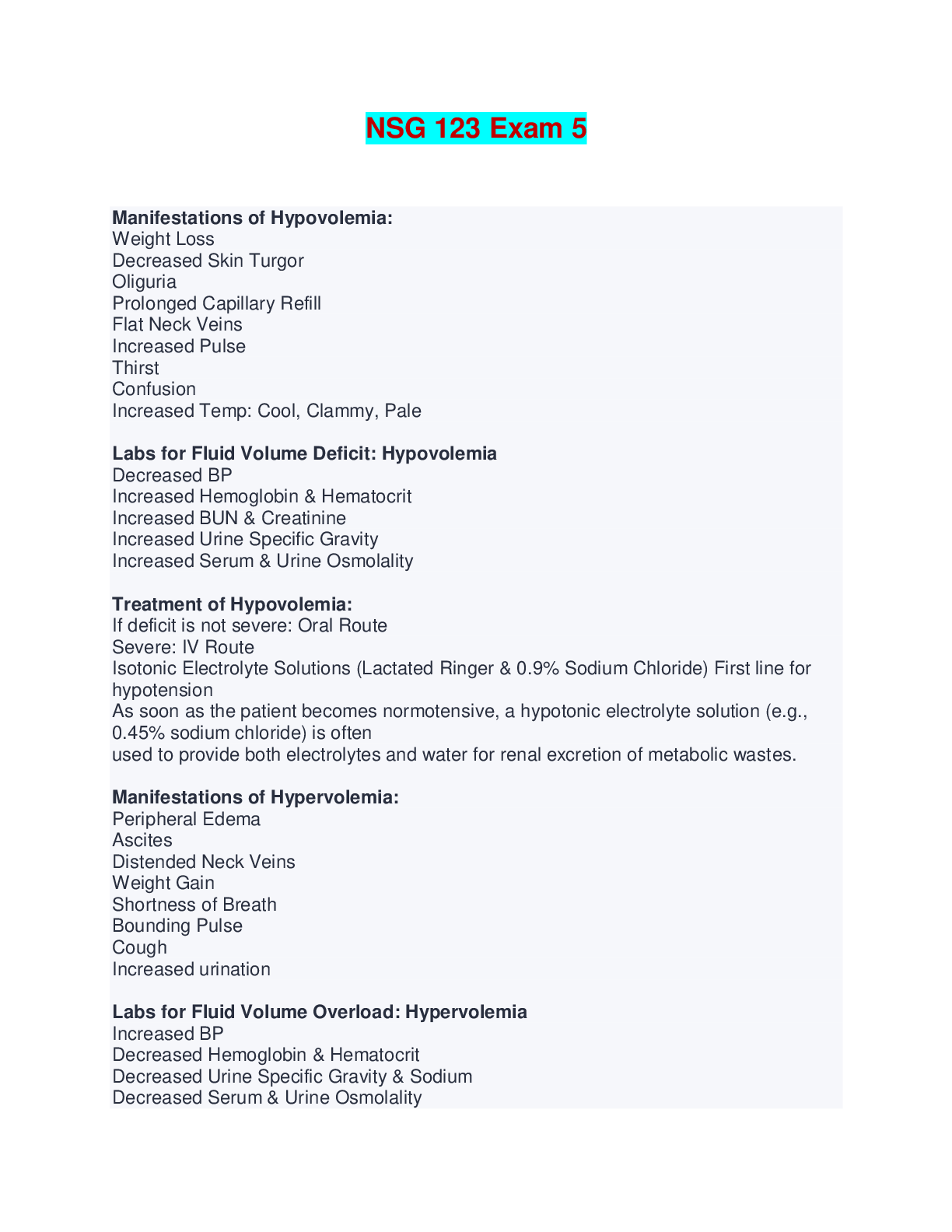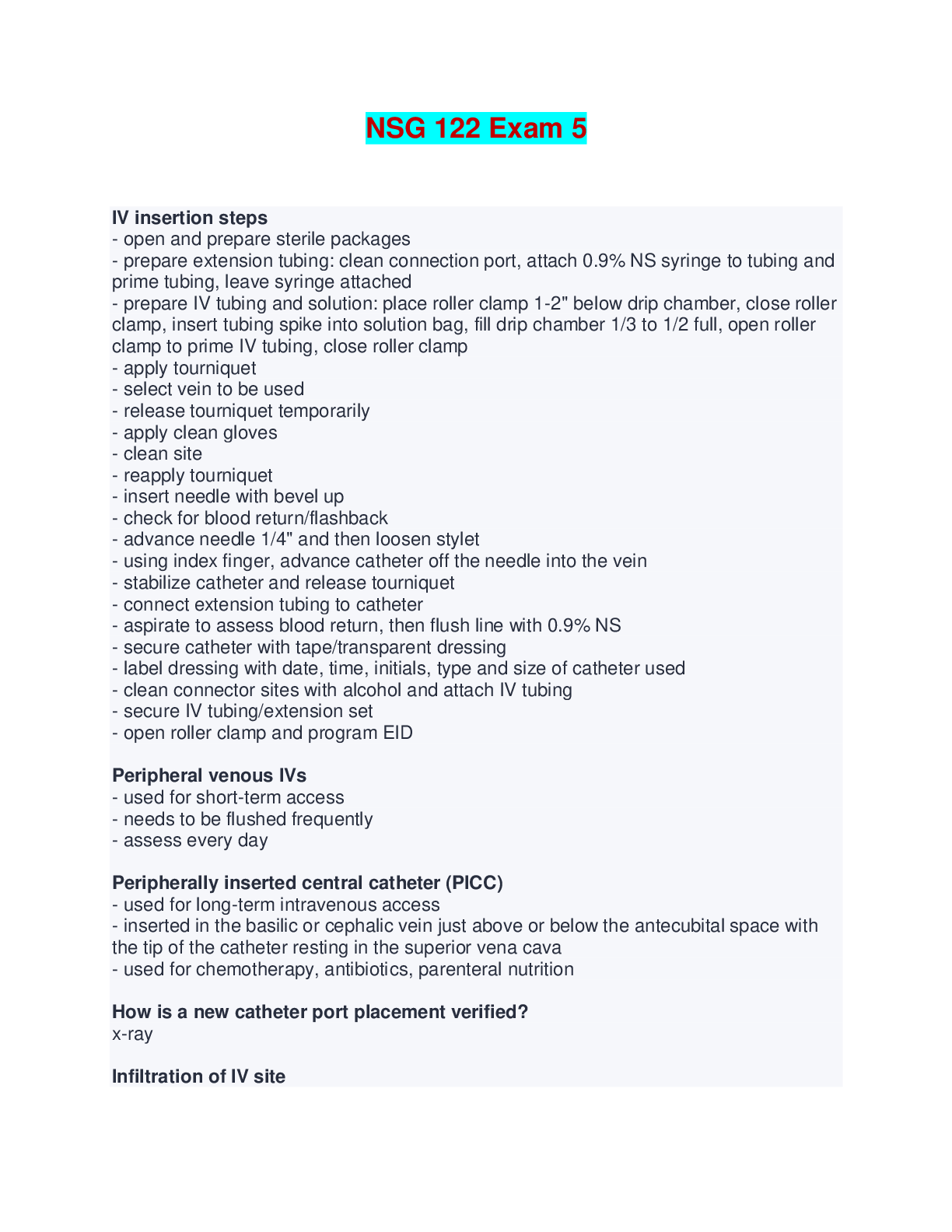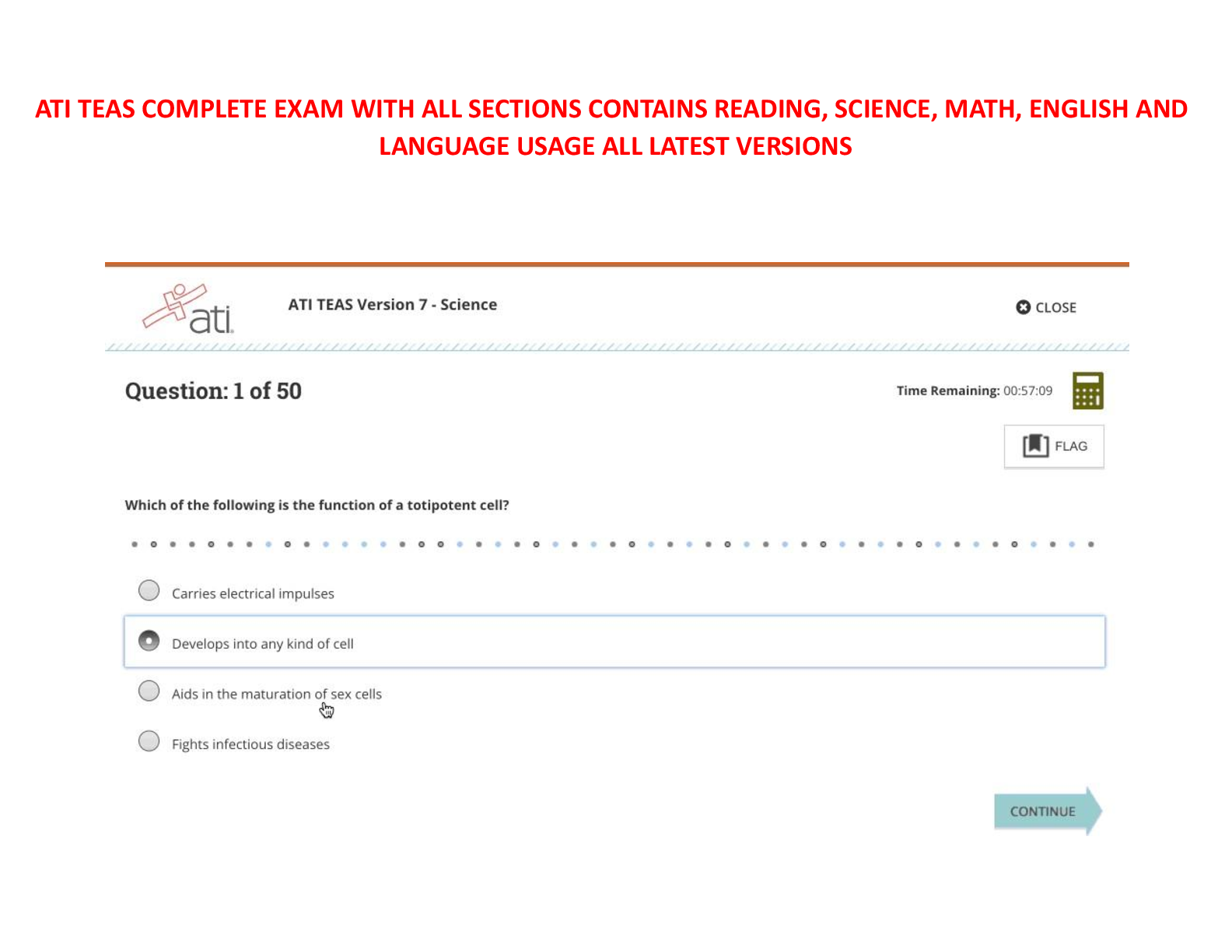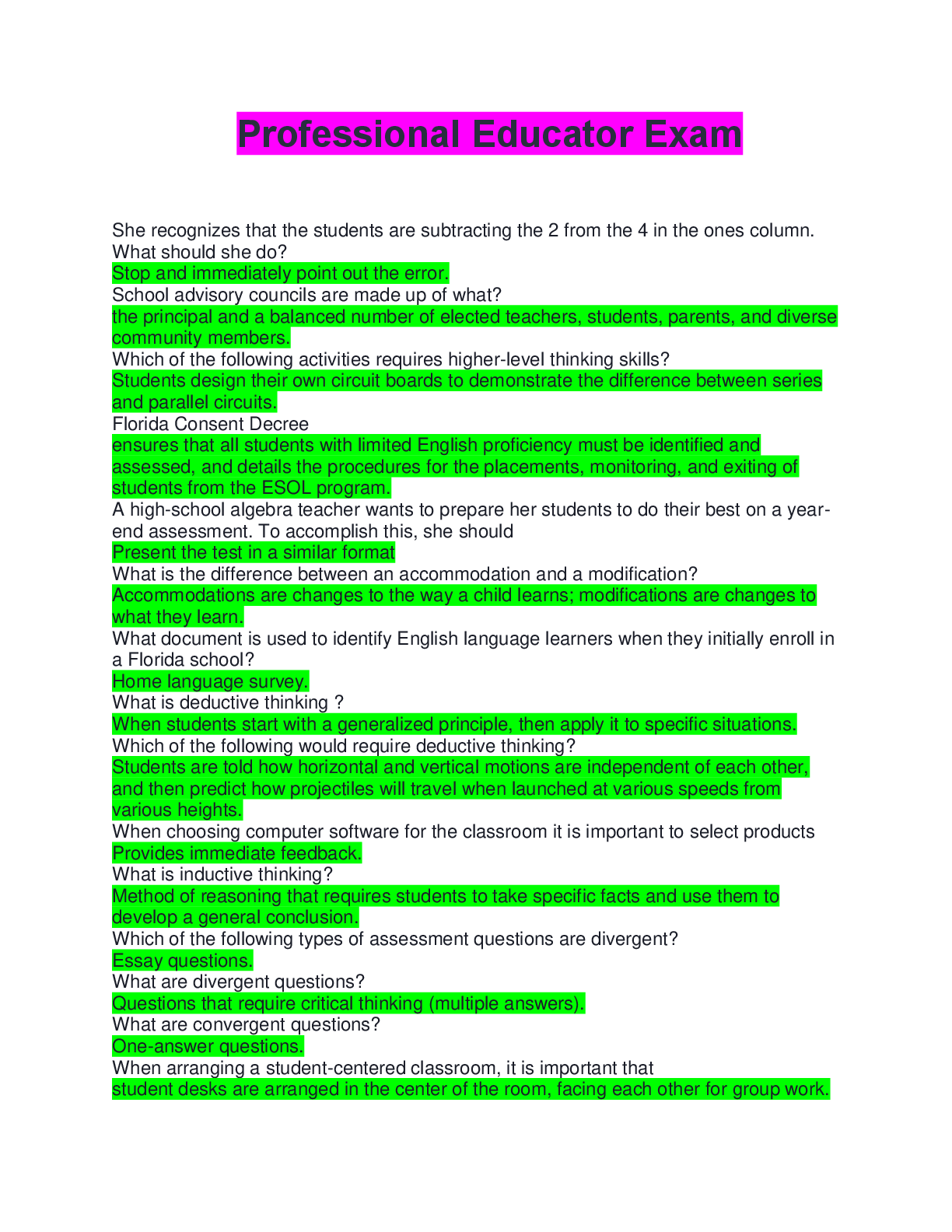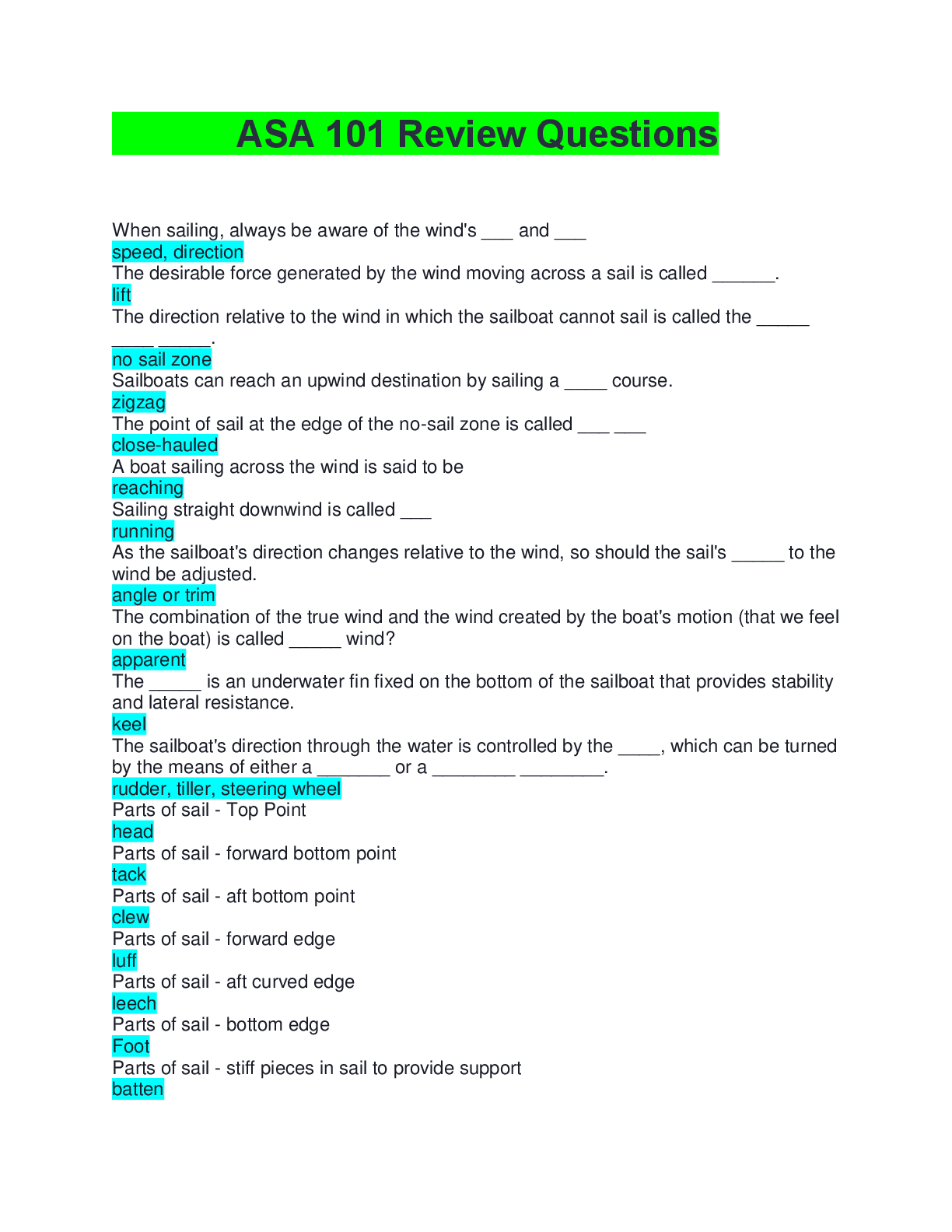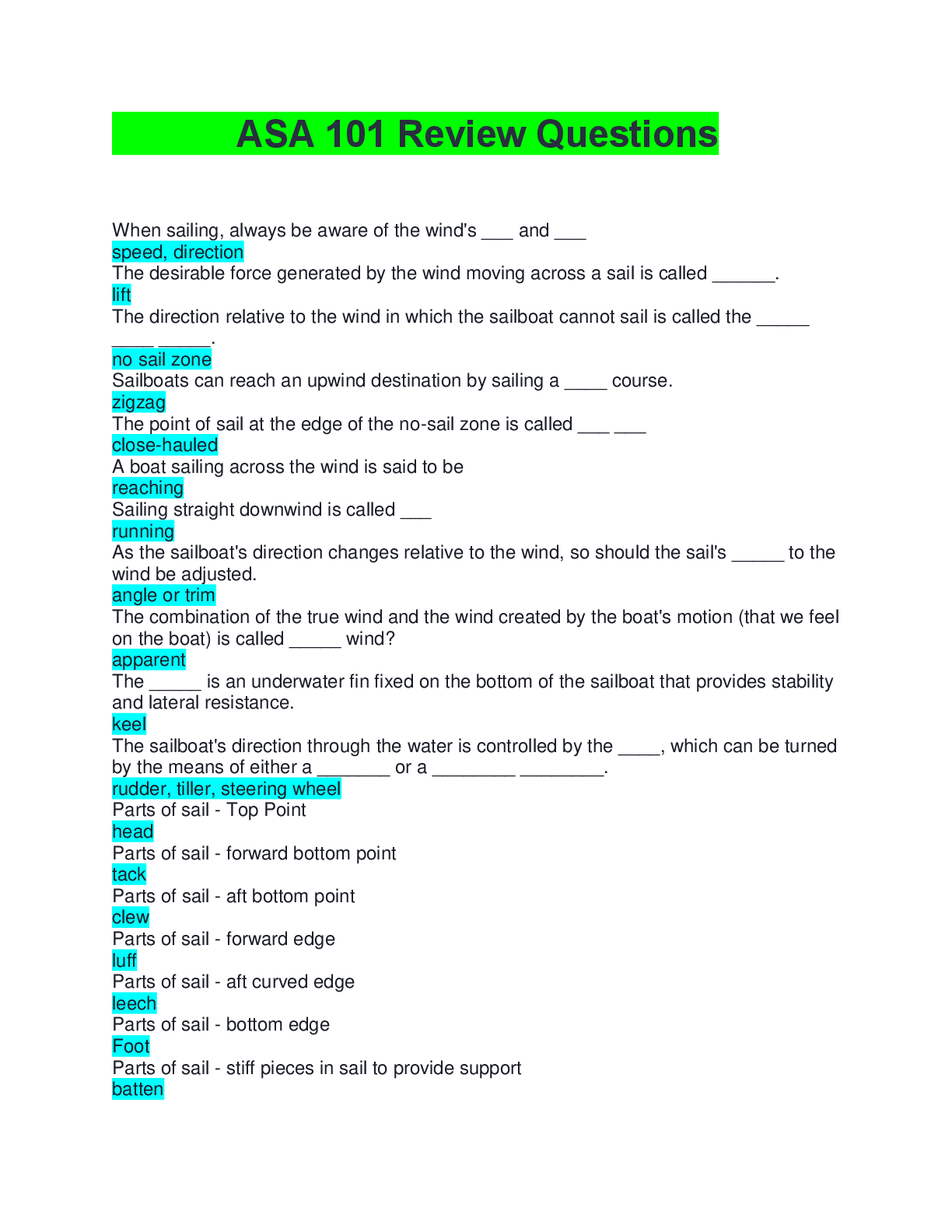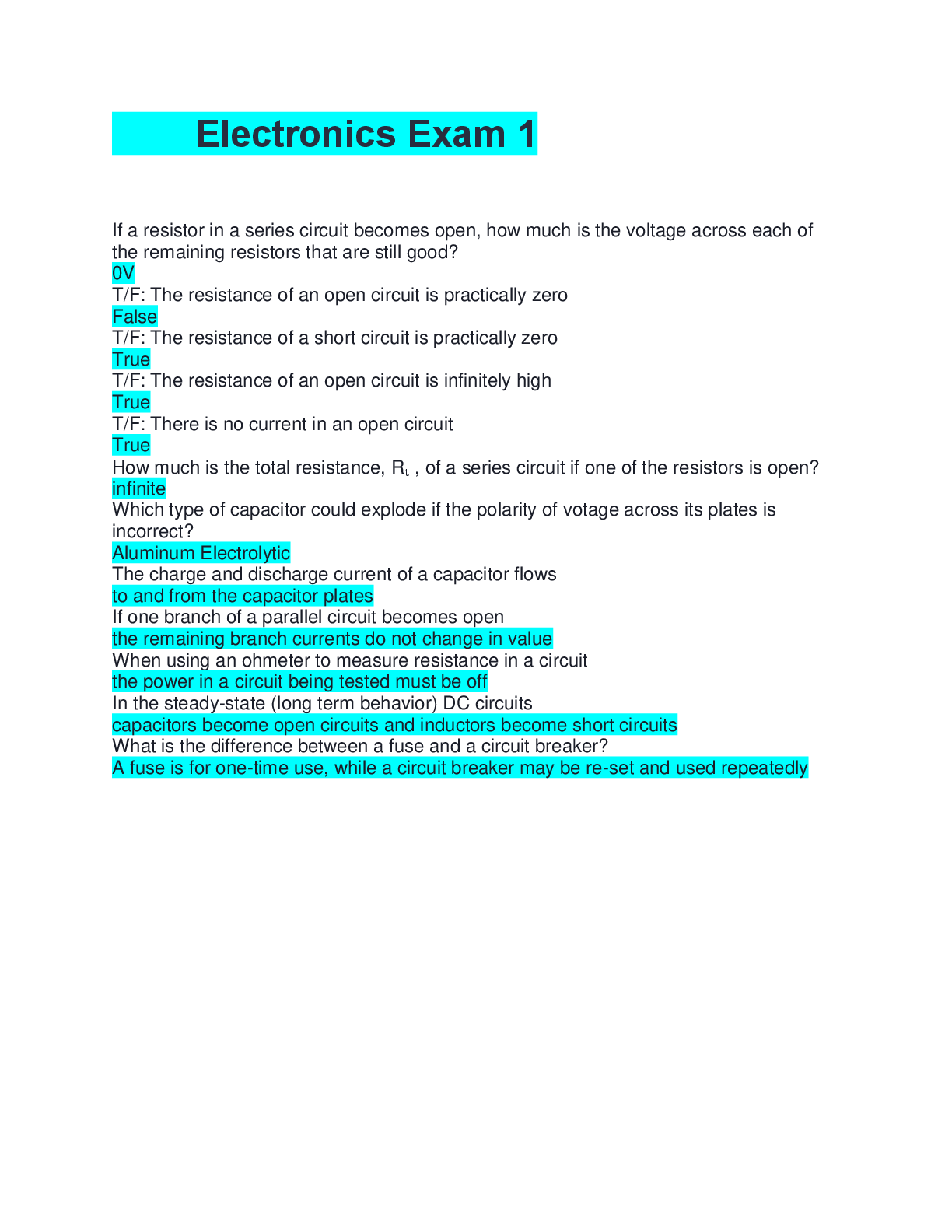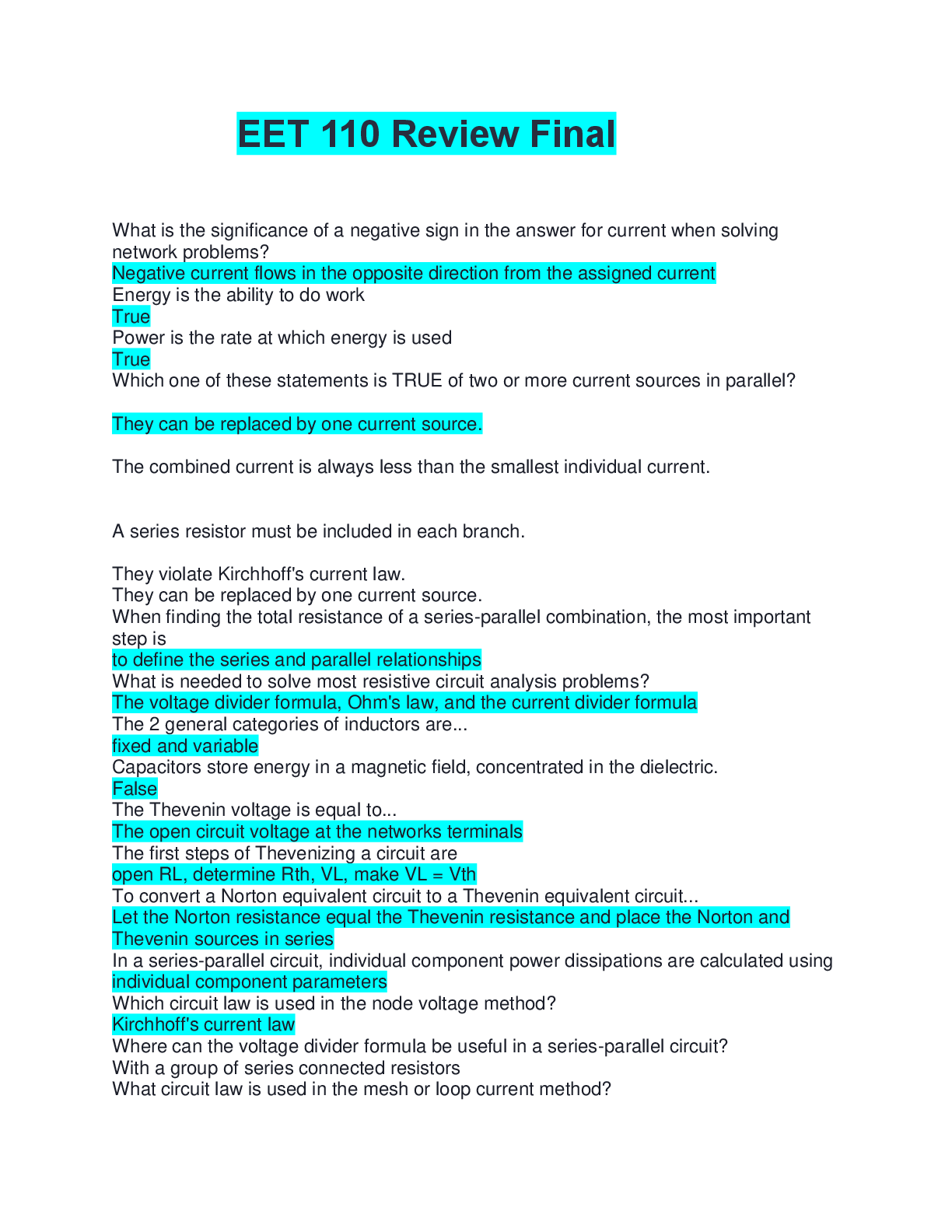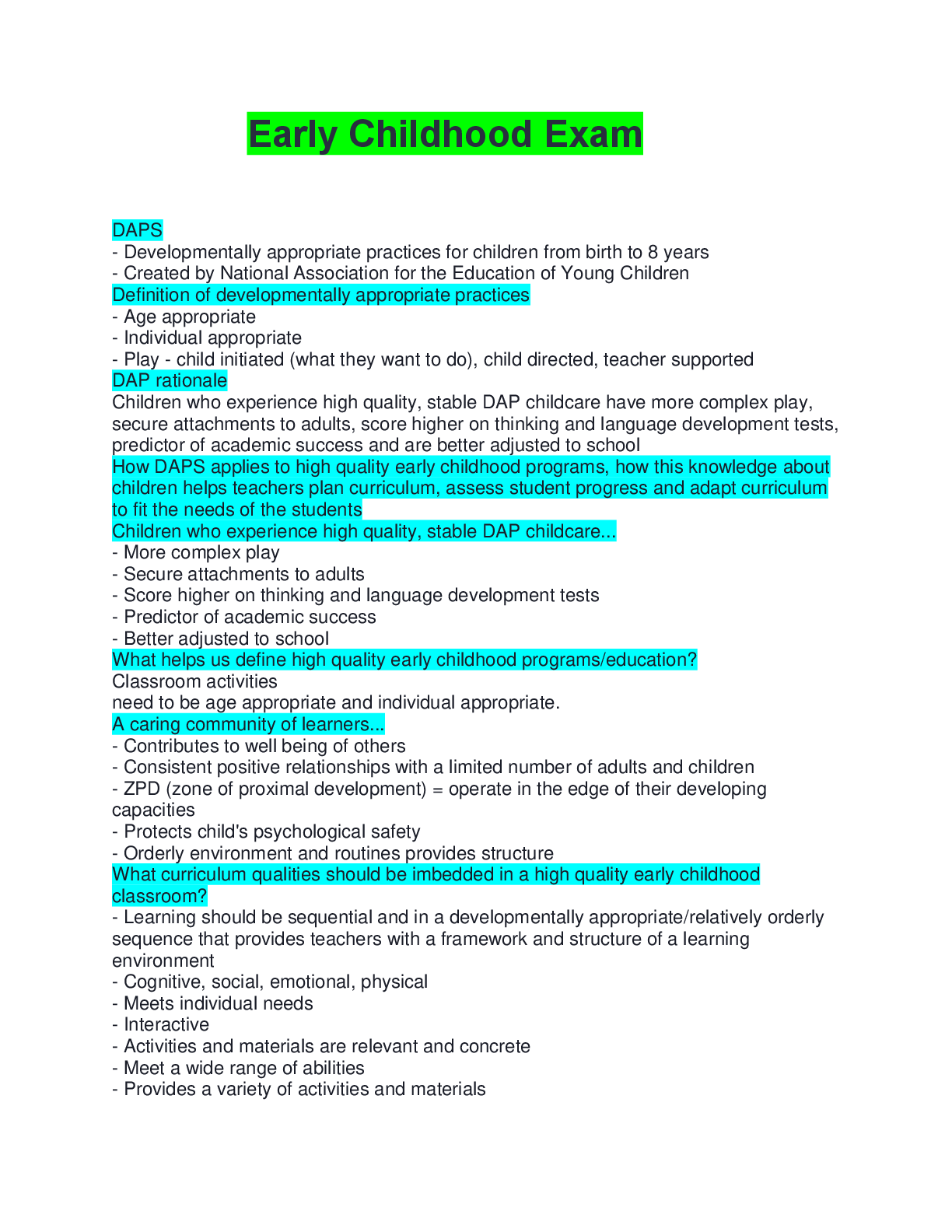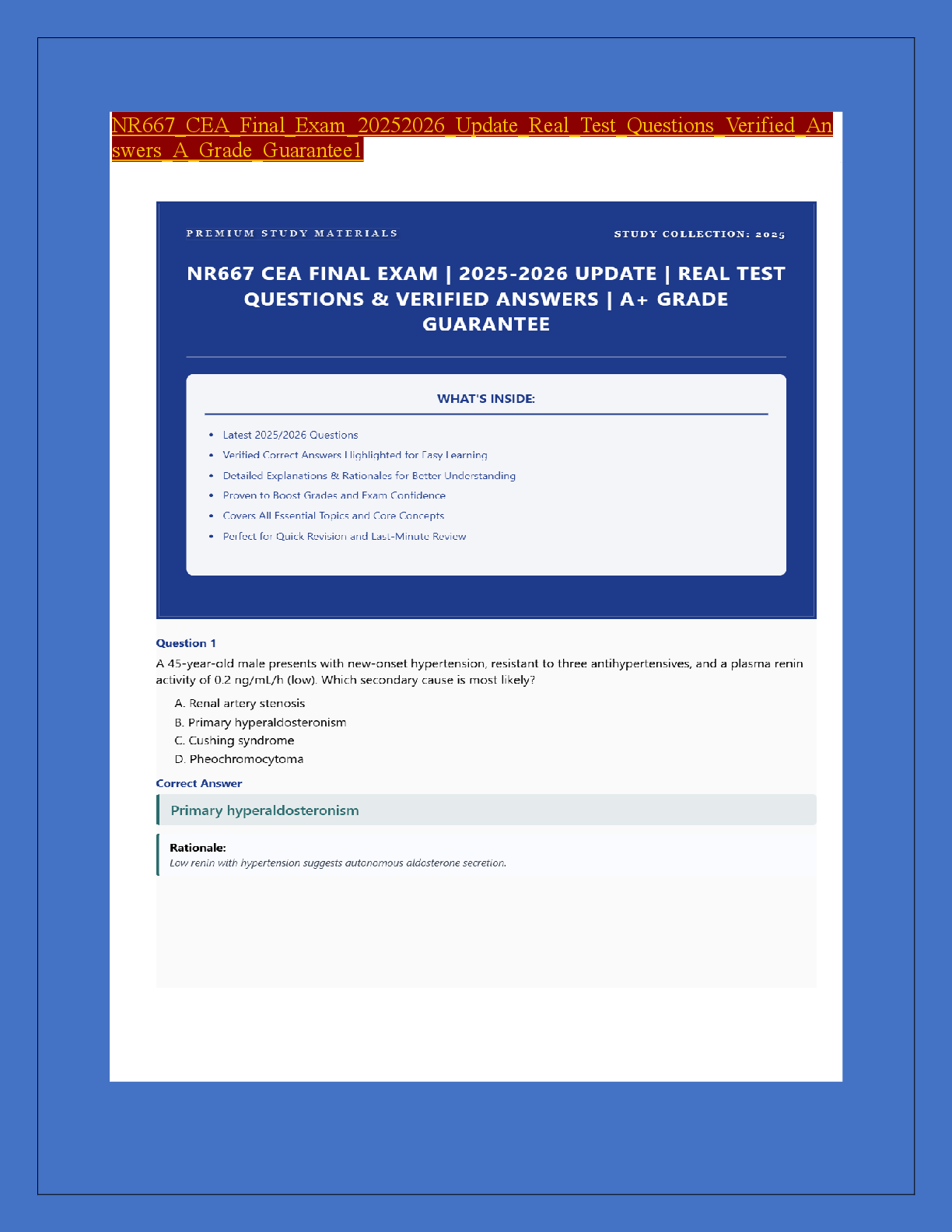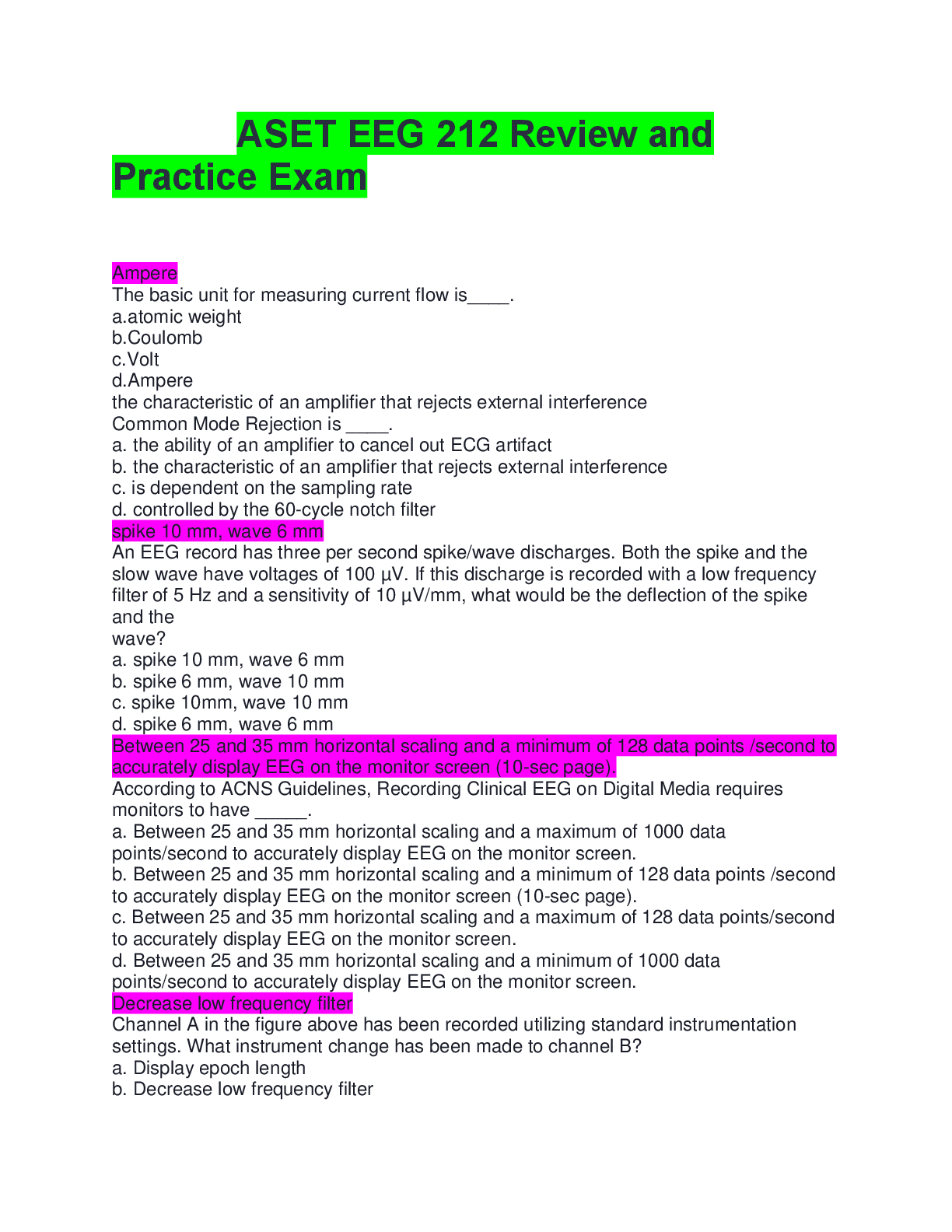c18 CNURSING 295 - Questions and Answers (Complete Solutions)
Document Content and Description Below
N295 ch 18 MULTIPLE CHOICE 1. Which of these statements is true regarding the vertebra prominens? The vertebra prominens is: 2. When performing a respiratory assessment on a patient, the ... nurse notices a costal angle of approximately 90 degrees. This characteristic is: 3. When assessing a patient’s lungs, the nurse recalls that the left lung: 4. Which statement about the apices of the lungs is true? The apices of the lungs: 5. During an examination of the anterior thorax, the nurse is aware that the trachea bifurcates anteriorly at the: 6. During an assessment, the nurse knows that expected assessment findings in the normal adult lung include the presence of: 7. The primary muscles of respiration include the: 8. A 65-year-old patient with a history of heart failure comes to the clinic with complaints of “being awakened from sleep with shortness of breath.” Which action by the nurse is most appropriate? 9. When assessing tactile fremitus, the nurse recalls that it is normal to feel tactile fremitus most intensely over which location? 10. The nurse is reviewing the technique of palpating for tactile fremitus with a new graduate. Which statement by the graduate nurse reflects a correct understanding of tactile fremitus? “Tactile fremitus: 11. During percussion, the nurse knows that a dull percussion note elicited over a lung lobe most likely results from: 12. The nurse is observing the auscultation technique of another nurse. The correct method to use when progressing from one auscultatory site on the thorax to another is _______ comparison. 13. When auscultating the lungs of an adult patient, the nurse notes that low-pitched, soft breath sounds are heard over the posterior lower lobes, with inspiration being longer than expiration. The nurse interprets that these sounds are: 14. The nurse is auscultating the chest in an adult. Which technique is correct? 15. The nurse is percussing over the lungs of a patient with pneumonia. The nurse knows that percussion over an area of atelectasis in the lungs will reveal: 16. During auscultation of the lungs, the nurse expects decreased breath sounds to be heard in which situation? 17. The nurse knows that a normal finding when assessing the respiratory system of an older adult is: 18. A mother brings her 3-month-old infant to the clinic for evaluation of a cold. She tells the nurse that he has had “a runny nose for a week.” When performing the physical assessment, the nurse notes that the child has nasal flaring and sternal and intercostal retractions. The nurse’s next ac-tion should be to: 19. When assessing the respiratory system of a 4-year-old child, which of these findings would the nurse expect? 20. When inspecting the anterior chest of an adult, the nurse should include which assessment? 21. The nurse knows that auscultation of fine crackles would most likely be noticed in: 22. During an assessment of an adult, the nurse has noted unequal chest expansion and recognizes that this occurs in which situation? 23. During auscultation of the lungs of an adult patient, the nurse notices the presence of bron-chophony. The nurse should assess for signs of which condition? 24. The nurse is reviewing the characteristics of breath sounds. Which statement about bronchovesic-ular breath sounds is true? Bronchovesicular breath sounds are: 25. The nurse is listening to the breath sounds of a patient with severe asthma. Air passing through narrowed bronchioles would produce which of these adventitious sounds? 26. A patient has a long history of chronic obstructive pulmonary disease (COPD). During the assessment, the nurse will most likely observe which of these? 27. A teenage patient comes to the emergency department with complaints of an inability to breathe and a sharp pain in the left side of his chest. The assessment findings include cyanosis, tachyp-nea, tracheal deviation to the right, decreased tactile fremitus on the left, hyperresonance on the left, and decreased breath sounds on the left. The nurse interprets that these assessment findings are consistent with: 28. An adult patient with a history of allergies comes to the clinic complaining of wheezing and difficulty in breathing when working in his yard. The assessment findings include tachypnea, the use of accessory neck muscles, prolonged expiration, intercostal retractions, decreased breath sounds, and expiratory wheezes. The nurse interprets that these assessment findings are con-sistent with: 29. The nurse is assessing the lungs of an older adult. Which of these changes are normal in the respiratory system of the older adult? 30. A woman in her 26th week of pregnancy states that she is “not really short of breath” but feels that she is aware of her breathing and the need to breathe. What is the nurse’s best reply? 31. A 35-year-old recent immigrant is being seen in the clinic for complaints of a cough that is associated with rust-colored sputum, low-grade afternoon fevers, and night sweats for the past 2 months. The nurse’s preliminary analysis, based on this history, is that this patient may be suffer-ing from: 32. A 70-year-old patient is being seen in the clinic for severe exacerbation of his heart failure. Which of these findings is the nurse most likely to observe in this patient? 33. A patient comes to the clinic complaining of a cough that is worse at night but not as bad during the day. The nurse recognizes that this cough may indicate: 34. During a morning assessment, the nurse notices that the patient’s sputum is frothy and pink. Which condition could this finding indicate? 35. During auscultation of breath sounds, the nurse should correctly use the stethoscope in which of the following ways? 36. A patient has been admitted to the emergency department with a possible medical diagnosis of pulmonary embolism. The nurse expects to see which assessment findings related to this condi-tion? 37. During palpation of the anterior chest wall, the nurse notices a coarse, crackling sensation over the skin surface. On the basis of these findings, the nurse suspects: 38. The nurse is auscultating the lungs of a patient who had been sleeping and notices short, popping, crackling sounds that stop after a few breaths. The nurse recognizes that these breath sounds are: 39. A patient has been admitted to the emergency department for a suspected drug overdose. His respirations are shallow, with an irregular pattern, with a rate of 12 respirations per minute. The nurse interprets this respiration pattern as which of the following? 40. A patient with pleuritis has been admitted to the hospital and complains of pain with breathing. What other key assessment finding would the nurse expect to find upon auscultation? MULTIPLE RESPONSE 1. The nurse is assessing voice sounds during a respiratory assessment. Which of these findings indicates a normal assessment? Select all that apply. [Show More]
Last updated: 3 years ago
Preview 1 out of 14 pages

Buy this document to get the full access instantly
Instant Download Access after purchase
Buy NowInstant download
We Accept:

Also available in bundle (1)
Click Below to Access Bundle(s)

CNURSING 295
CHAPTER 23 NEUROLOGIC SYSTEM,CHAPTER 21 ABDOMINAL ASSESSMENT,N295 EXAM 4,N295 EXAM 3,c22,c21,c19,c18,c17,c16,c15,c14,c13,c12,c11,c10,c9,c8,c7,c6,c5,c4,c2,c1
By Ajay25 4 years ago
$75
24
Reviews( 0 )
$15.00
Can't find what you want? Try our AI powered Search
Document information
Connected school, study & course
About the document
Uploaded On
Jan 18, 2021
Number of pages
14
Written in
All
Additional information
This document has been written for:
Uploaded
Jan 18, 2021
Downloads
0
Views
164


